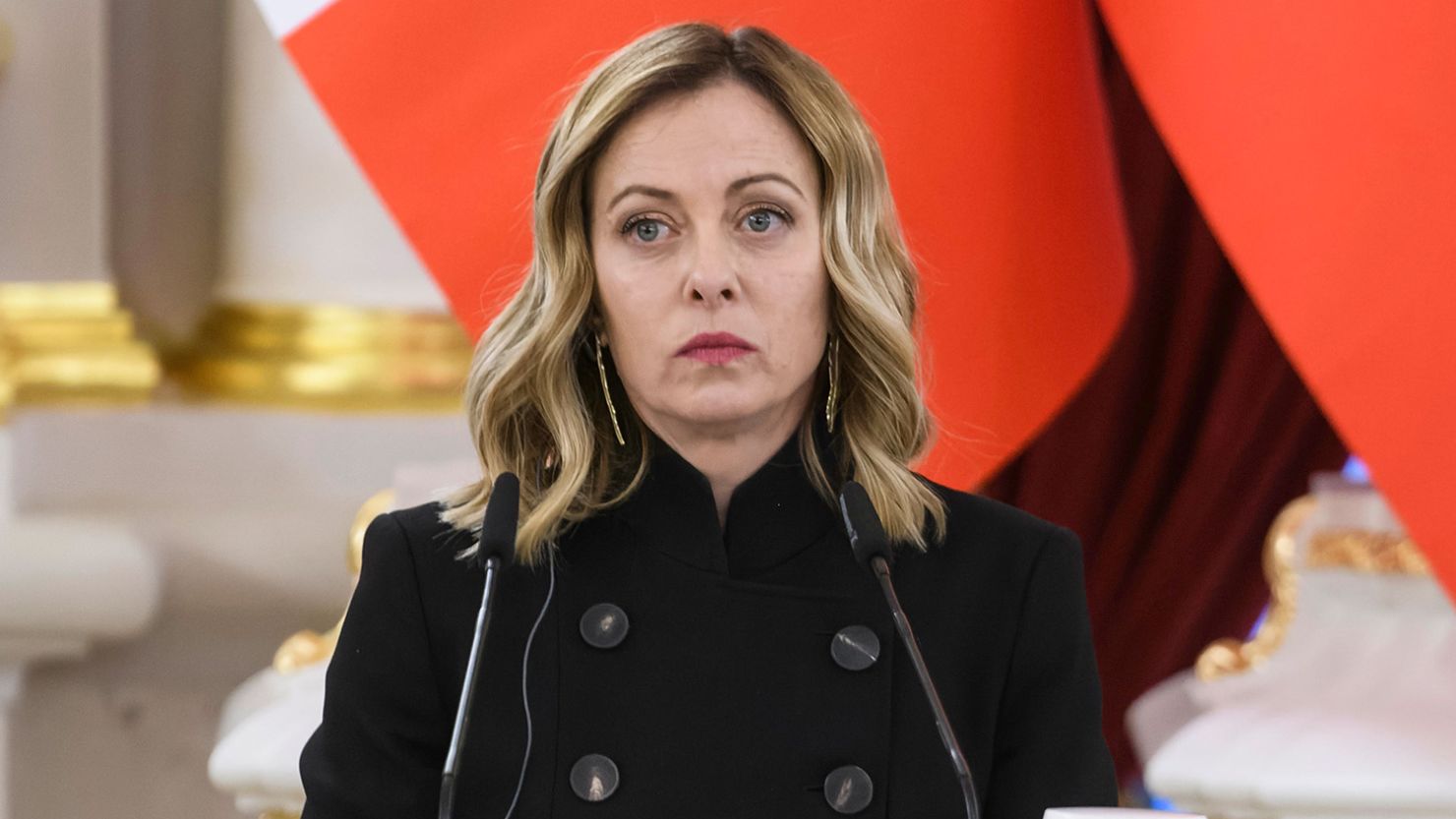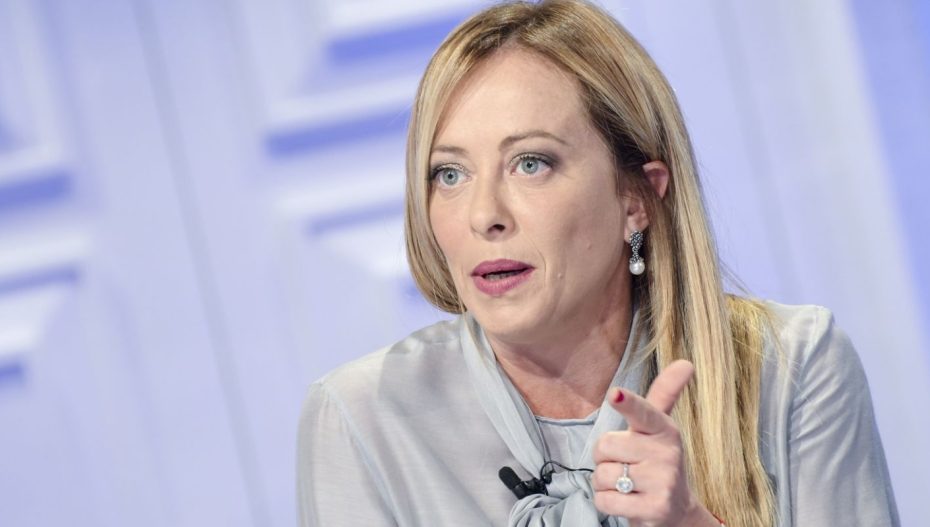Italian politician Giorgia Meloni is taking legal action against unidentified individuals responsible for creating and circulating deepfake videos of her. Meloni, leader of the right-wing Brothers of Italy party, is seeking 100,000 euros in damages for the dissemination of these videos, which she claims are defamatory and intended to harm her reputation. Deepfake technology has increasingly become a tool used by malicious actors to manipulate and spread false information.
In recent years, public figures and politicians around the world have fallen victim to deepfake videos, raising concerns about the potential impact on elections and public trust. Meloni’s case highlights the urgent need for legislation and regulations to address the growing threat of deepfakes and protect individuals from the harm they can cause. As deepfake technology continues to evolve, it is crucial for lawmakers and tech companies to work together to implement effective Zeusslot countermeasures and safeguard against the misuse of this technology.

What are deepfake videos?
Deepfake videos are highly realistic, manipulated videos that use artificial intelligence (AI) technology to superimpose the face of one person onto another person’s body or to completely fabricate someone’s appearance and actions. These videos are created using deep learning algorithms and neural networks that analyze and generate realistic facial movements and expressions. The result is a video that appears authentic and convincing, making it difficult for viewers to distinguish between what is real and what is fake. Deepfakes can be created using various sources, such as publicly available images, videos, and audio recordings of the targeted individual.
The development and accessibility of deepfake technology have raised significant concerns as these videos can be used to spread misinformation, defame individuals, and manipulate public perceptions. While deepfakes initially gained attention for their use in creating explicit content featuring celebrities without their consent, they have evolved to target public figures, politicians, and even ordinary individuals. The potential consequences of deepfake videos extend beyond personal reputations and privacy violations, with implications for democracy, trust, and societal stability.
Deepfake technology has the potential to erode public trust in media and institutions, as it becomes increasingly difficult to discern genuine information from manipulated content. The spread of deepfakes can lead to the dissemination of false information, affecting public opinion, and potentially influencing elections and political outcomes. The rapid advancement and accessibility of deepfake technology have made it easier for malicious actors to create and circulate these videos, amplifying the need for effective measures to address this growing threat.
The impact of deepfake videos on individuals and society
The emergence of deepfake videos poses serious threats to individuals, society, and democratic processes. With the ability to convincingly manipulate someone’s appearance and actions, deepfakes have the potential to destroy reputations, incite violence, and destabilize social cohesion. Public figures, including politicians, are particularly vulnerable to the detrimental effects of deepfakes, as their images and voices can be easily manipulated to spread false information and undermine public trust.
Deepfake videos can have severe personal and professional consequences for individuals targeted by these malicious creations. The dissemination of deepfakes can damage reputations, ruin careers, and cause emotional distress. Victims may face public humiliation, loss of credibility, and strained relationships as a result of the false narratives perpetuated by deepfake videos. The psychological impact on individuals who fall victim to deepfakes can be profound, leading to feelings of helplessness, anxiety, and a sense of violation.
Furthermore, the societal impact of deepfake videos cannot be overlooked. As these videos become more sophisticated and difficult to detect, the potential for widespread manipulation of public opinion and the erosion of trust in institutions increases. Deepfakes have the power to fuel conspiracy theories, sow discord, and undermine the integrity of information sources. The consequences of deepfakes extend beyond individual victims, affecting the fabric of society and the foundation of democratic processes.
Giorgia Meloni’s case: The deepfake videos targeting her
Giorgia Meloni, the leader of the right-wing Brothers of Italy party, has become a victim of deepfake videos that aim to tarnish her reputation and credibility. These videos, created by unidentified individuals, have been circulating online, causing significant harm to Meloni’s personal and professional life. The deepfakes depict her engaging in inappropriate behavior, spreading false information, and engaging in unethical practices. Meloni, recognizing the potential impact of these videos on her reputation and public image, has decided to take legal action to hold the perpetrators accountable.
The deepfake videos targeting Giorgia Meloni exemplify the dangers posed by this technology. By manipulating her appearance and actions, the creators of these videos aim to deceive the public and damage her reputation. The malicious intent behind these deepfakes highlights the urgent need for legal protections and regulations to mitigate the harm caused by such manipulative and deceptive content.

Legal implications and challenges of deepfake videos
The rise of deepfake videos has presented significant legal challenges, as existing laws struggle to keep pace with rapidly advancing technology. Deepfakes blur the line between reality and fiction, making it difficult to determine the authenticity of visual and audio content. This poses challenges when it comes to legal frameworks surrounding defamation, privacy, and intellectual property rights.
Defamation laws, for example, traditionally focused on protecting individuals from false statements or representations that harm their reputation. However, when it comes to deepfake videos, the concept of truth becomes muddled. It becomes challenging to prove the malicious intent behind these videos and establish the boundaries between free expression and harmful misinformation. Adapting existing laws to address the unique characteristics of deepfakes is crucial to protect individuals and hold perpetrators accountable for their actions.
Privacy concerns also come into play with deepfake videos. Individuals’ likeness and personal information are exploited without their consent, violating their privacy rights. Laws surrounding consent and the use of personal data need to be strengthened to address the potential misuse of deepfake technology.
Additionally, intellectual property rights face challenges in the context of deepfakes. When someone’s image, voice, or likeness is used without permission, it raises questions about copyright infringement and the ownership of one’s identity. The legal framework should be updated to encompass the unique challenges presented by deepfake technology and ensure that individuals have control over the use of their own likeness.
Giorgia Meloni’s response to the deepfake videos
In response to the deepfake videos targeting her, Giorgia Meloni has decided to take legal action to protect her reputation and seek damages from the individuals responsible for their creation and dissemination. Meloni believes that holding the perpetrators accountable will send a strong message that deepfake videos are not a tool to be used for malicious purposes without consequence.
By taking legal action, Meloni aims to raise awareness about the dangers of deepfake technology and the potential harm it can cause to individuals and society. She hopes that her case will prompt lawmakers and tech companies to collaborate in developing effective regulations and countermeasures to combat the spread of deepfakes.
Meloni’s decision to seek damages also serves as a deterrent to those who may consider using deepfake videos for nefarious purposes. By holding individuals accountable for their actions, it sends a clear message that the dissemination of defamatory or misleading deepfake videos will not be tolerated.
Seeking damages: The reasoning behind Giorgia Meloni’s lawsuit
Giorgia Meloni’s decision to seek damages in her lawsuit against the creators and disseminators of the deepfake videos targeting her is grounded in the harm caused to her reputation, emotional well-being, and professional career. The defamatory nature of these deepfakes has the potential to significantly impact her personal and professional relationships, as well as her ability to effectively carry out her political duties.
Seeking damages serves as a form of compensation for the harm inflicted upon Meloni. It also sends a strong message to those who engage in the creation and dissemination of deepfakes that their actions have consequences. By pursuing legal action, Meloni aims to hold the perpetrators accountable and discourage others from engaging in similar malicious activities.
Furthermore, the lawsuit serves a broader purpose of raising awareness about the dangers of deepfake technology and the urgent need for regulations and countermeasures to protect individuals from its harmful effects. Meloni’s case highlights the importance of taking proactive measures to safeguard against the misuse of deepfake videos and ensure the integrity of public discourse.

The importance of protecting individuals from deepfake videos
The case of Giorgia Meloni underscores the pressing need for robust protections against deepfake videos. Individuals, especially public figures and politicians, should be able to carry out their duties without fear of their reputation being tarnished by manipulated and false information. Society as a whole benefits from the protection of individuals’ privacy, reputation, and emotional well-being.
Protecting individuals from the harmful effects of deepfakes requires a multi-faceted approach. Legislation and regulations must be implemented to address the unique challenges posed by deepfake technology. These measures should encompass defamation laws, privacy protections, and intellectual property rights. Additionally, collaboration between tech companies and policymakers is essential to develop effective detection and mitigation tools to identify and combat the spread of deepfakes.
Education and awareness campaigns are also crucial to equip individuals with the knowledge and skills to identify and navigate the increasingly complex landscape of manipulated content. By empowering individuals to recognize and critically evaluate deepfakes, they can better protect themselves and others from falling victim to the detrimental effects of this technology.
Measures to combat deepfake videos
The fight against deepfake videos requires a comprehensive approach involving legislation, technology, and societal awareness. To effectively combat the spread of deepfakes, the following measures should be considered:
- Legislation and regulations: Governments should enact laws that specifically address the creation, dissemination, and malicious use of deepfake videos. These laws should protect individuals’ privacy, reputation, and intellectual property rights while allowing for free expression within ethical boundaries. Penalties for the creation and dissemination of harmful deepfakes should be severe enough to deter potential offenders.
- Collaboration with tech companies: Tech companies play a pivotal role in detecting and mitigating the spread of deepfake videos. Collaboration between lawmakers and tech companies can lead to the development of effective detection algorithms and tools to identify and flag deepfakes. Platforms should also implement policies and guidelines to prevent the sharing and amplification of deepfake content.
- Education and awareness: Educating the public about deepfake technology is essential to empower individuals to recognize and critically evaluate manipulated content. Educational campaigns should focus on raising awareness about the potential harm caused by deepfakes and providing individuals with tools to identify and report suspicious content. Media literacy programs should be integrated into educational curricula to equip individuals with the skills needed to navigate the digital landscape responsibly.
- Research and development: Continued investment in research and development is crucial to stay ahead of evolving deepfake technology. Funding should be allocated to researchers working on detection and mitigation tools to combat the spread of deepfakes. Collaboration between academia, industry, and government institutions can drive innovation and the development of effective countermeasures.
By implementing these measures, society can work towards mitigating the harmful effects of deepfake videos and protecting individuals from the potential damage caused by their dissemination.
The future of deepfake videos and the need for stricter regulations
The case of Giorgia Meloni seeking damages over deepfake videos highlights the urgent need for stricter regulations and countermeasures to address the growing threat of manipulated content. Deepfake technology has the potential to undermine public trust, manipulate elections, and harm individuals’ personal and professional lives.
To safeguard against the misuse of deepfake videos, legislation and regulations must be updated to encompass the unique challenges posed by this technology. Collaboration between lawmakers and tech companies is essential to develop effective detection algorithms, mitigation tools, and policies to combat the spread of deepfakes.
Education and awareness campaigns play a crucial role in equipping individuals with the knowledge and skills to navigate the digital landscape responsibly. By empowering individuals to recognize and critically evaluate deepfakes, they can better protect themselves and contribute to the collective defense against the harmful effects of manipulated content.
If you found this article insightful, we invite you to delve into our piece on the complexities surrounding the Royal Family. Discover how they navigate the challenges of the modern world while upholding tradition and prestige. Your continued engagement fuels our commitment to delivering informative and thought-provoking content.




